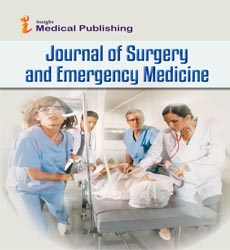Introduction of the predictive radiographic factors for Soft tissue release and distal femoral cut angle during total knee arthroplasty
Abstract
Background: Estimation of the amount of distal femoral cut angle and the extension of the corresponding soft tissue release enable surgeons to prepare for the necessary facilities. Therefore, we aimed to introduce and evaluate some predictive radiographic values for the extent of medial soft tissue release (MSTR) and distal femur valgus cut angle (VCA). Methods: This is a prospective cohort study with the involvement of 62 lower limbs (57 patients). The participants had undergone standard lower limb three joint views (alignment view) before surgery. Two persons measured radiographic parameters in parallel. The relationship of the radiographic measurements with the stage of MSTR and the degree of valgus cut angle were investigated further. Results: According to the multivariate analysis, the significant positive relationship between medial hip offset (MHO) (P < .001) and VCA as well as the positive correlation between femoral length (FL) (P < .001) and VCA were identified. Indeed, patients with a shorter femur and more than 4.35 cm of medial hip offset (MHO) require a distal femoral cut of 6 degrees or more in accordance to the distal third of the femoral anatomical axis, and those who have longer femur and less than 4.35 cm of MHO needed fewer than 6 degrees (sensitivity of 83% and specificity of 80%). Likewise, lateral distal femoral angle (LDFA), varus angle (VA), and joint-line congruency angle (JLCA), significantly and positively correlated with the stage of MSTR in patients during TKA surgery and according to the ROC curve, VA has the best performance (sensitivity: 91.7 % and specificity: 100%). Conclusion: Increasing the LDFA to more than 93.5 °, JLCA to more than 7.5 °, and VA to more than 19 ° would increase the likelihood of extensive MSTR independently. Likewise, MHO and FL are the most valuable predicting factors for the amount of VCA
Open Access Journals
- Aquaculture & Veterinary Science
- Chemistry & Chemical Sciences
- Clinical Sciences
- Engineering
- General Science
- Genetics & Molecular Biology
- Health Care & Nursing
- Immunology & Microbiology
- Materials Science
- Mathematics & Physics
- Medical Sciences
- Neurology & Psychiatry
- Oncology & Cancer Science
- Pharmaceutical Sciences
